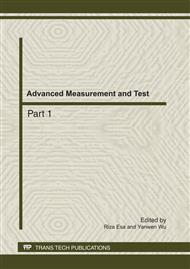p.902
p.908
p.913
p.919
p.924
p.932
p.937
p.943
p.949
Quantitative and Comprehensive Evaluation of Qualitative Indices in Dam Safety Monitoring
Abstract:
Since there are few methods to evaluate the qualitative index in dam safety monitoring and the evaluation system is imperfect, in this paper a new quantitative and comprehensive evaluation method for qualitative index is explored with the introduction of the method of interval marking, Set-Valued Statistics, grey theory and Jousselme distance function. Firstly, the interval marking method and Set-Valued Statistics are used to obtain the comprehensive quantitative value; then the evaluation class of the comprehensive quantitative value is quantified and the evidence vector is obtained through grey theory; next the weights of all qualitative indices are obtained through Jousselme distance function; finally the comprehensive influence of the qualitative indices on dam safety is determined by using the evidence vector and weights. The case study proves that this method is feasible which can reasonably determine the influence of qualitative index on dam safety.
Info:
Periodical:
Pages:
924-931
Citation:
Online since:
July 2011
Keywords:
Price:
Сopyright:
© 2011 Trans Tech Publications Ltd. All Rights Reserved
Share:
Citation:


